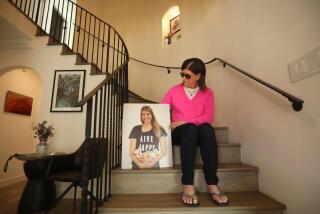A medical odyssey
You may have noticed that I’ve had “the day off” for the last three weeks. That’s something of an understatement, since I was actually in the hospital for 11 days, four of which I was intubated and sedated in the intensive care unit. I received two platelet transfusions, one blood transfusion, a spinal tap, three EEGs, three MRIs, two CT scans and round-the-clock infusions of four kinds of antibiotics. I had liver failure, kidney trouble and meningoenchephalitis, a swelling of the brain and the lining around it. I had a breathing tube and a feeding tube. Friends and family gathered at the hospital. My father jumped on a plane from New York. My husband, though he rarely left my side, was beside himself. At one point, my platelet count, which is supposed to be somewhere around 200,000, was 14,000. That meant there was a high risk of spontaneous internal bleeding.
And then I woke up. I had no idea the relief — and in some cases the surprise — this produced in the people around me. As far as I was concerned, I had some kind of flu. A week earlier, I’d been in New York and started running a fever, which I managed to control with Tylenol. I chalked up various other symptoms — headache, vomiting, extreme thirst — to a nasty if run-of-the-mill virus (for which, of course, the only cure is time), until I returned to L.A. the following Monday, Oct. 27. On Tuesday, I saw a doctor, who put me on an IV for rehydration. On Wednesday, I saw another doctor, who put me in an ambulance. The thought was that I had hepatitis, since my eyes were yellow.
I can’t tell you exactly what happened at the hospital. I remember being taken to the basement for one MRI (which apparently wasn’t useful since I was squirming too much). I remember being asked what year it was and not being entirely sure. I remember not being able to get the words in my head to match those coming out of my mouth. I remember thinking, with inexpressible horror, that I was starting to sound just like my mother had when she developed confusion several weeks before her death from cancer at the end of last year: faint, slurring and seemingly past the point of no return.
It would be days before I learned how close I’d come to that point myself. The information would trickle in only as it arose in conversation; for instance, when I noticed that my wrists were bruised and remarked that it must be the result of medication. “No,” my husband said, “it’s because they put you in restraints to keep you from ripping out your feeding tube.” When a physical therapist who’d heard about my case came in to introduce herself, she told me that seeing someone come back from something so serious amounted to a “small miracle.” This struck me as sweet but also rather hocus-pocus-y. A week later, however, a neurologist said the same thing.
Throughout all this, no one could figure out what I had. Since I’d been bitten repeatedly by mosquitoes one night in New York (I’m one of those people who can attract bugs from three states away), West Nile virus was suspected, but it was eventually ruled out. Also ruled out were hepatitis, HIV, Rocky Mountain spotted fever and dengue fever.
At one point the infectious disease specialist asked my husband if I’d received any packages filled with white powder. (Anthrax? Say you wouldn’t do it, dear readers.) Though everyone was sure what I had was viral — the initial tests seemed to bear out this theory — no one could pinpoint what virus it was. Even as I got stronger (which is to say, even as I gained the energy to get out of bed and take 10 steps down the hallway) and the medications were slowly removed from my IV drip, every new blood or spinal fluid test failed to answer the question.
Finally, nine days after I was admitted, an answer emerged. I had typhus. You read that right. There are several different types of typhus, the best known being the epidemic type that used to spread among soldiers, prisoners and others living in crowded, unsanitary conditions (Anne Frank died of epidemic typhus in Bergen-Belsen.) Typhus has nothing to do with typhoid, which comes from salmonella in food and water and for which there’s a vaccine. The type I had was murine typhus, which is spread by fleas, mites and lice that live on rats, opossums and feral cats. (“Murine” refers to murids, the family of rodents.) My mysterious case was by far the worst my team of doctors had ever seen — and it turns out I got it from my own backyard in Pasadena.
To be continued Dec. 2.
More to Read
Sign up for Essential California
The most important California stories and recommendations in your inbox every morning.
You may occasionally receive promotional content from the Los Angeles Times.











